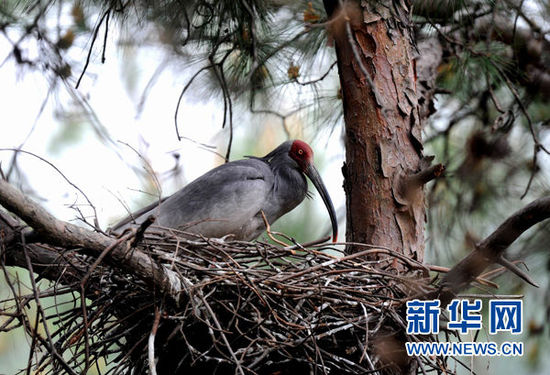Top 10 most endangered animals in China
- By Yang Xi
 0 Comment(s)
0 Comment(s) Print
Print E-mail China.org.cn, February 8, 2012
E-mail China.org.cn, February 8, 2012

The Crested Ibis, as large as 80 cm, has a long beak and red cheeks. Its head is partially bare and it has a dense crest of white plumes on the nape.
Status:
In the past 30 years, the wild population has increased from 7 individuals to about 700 birds and there are another 700 of them living in captivity.
Geographic Distribution:
Crested Ibis, which used to be widespread in China, Japan, Russia and the Democratic People's Republic of Korea, was thought to be in the 1960s due to overexploitation and destruction of habitat, and was rediscovered in Yangxian, northwestern China's Shaanxi Province in 1981.
The population of crested ibis has expanded to 1,400 in Shaanxi Province, thanks to three decades of conservation.
You may not know:
Crested Ibis live in the mainland and wetlands. They make their own nests at the tops of the trees on hills. Crested Ibises usually eat frogs, small fish, grasshoppers, river snails and mud fish.
The Crested Ibis usually reinforces its nest when it is breeding. The bird lays 3 to 4 eggs in April. The male and female take turns to breed. When it is born and is fed by the couple of the birds. One month after it is born, the young Crested Ibis begins to learn how to fly and then it can look for food by itself.
Go to Forum >>0 Comment(s)







